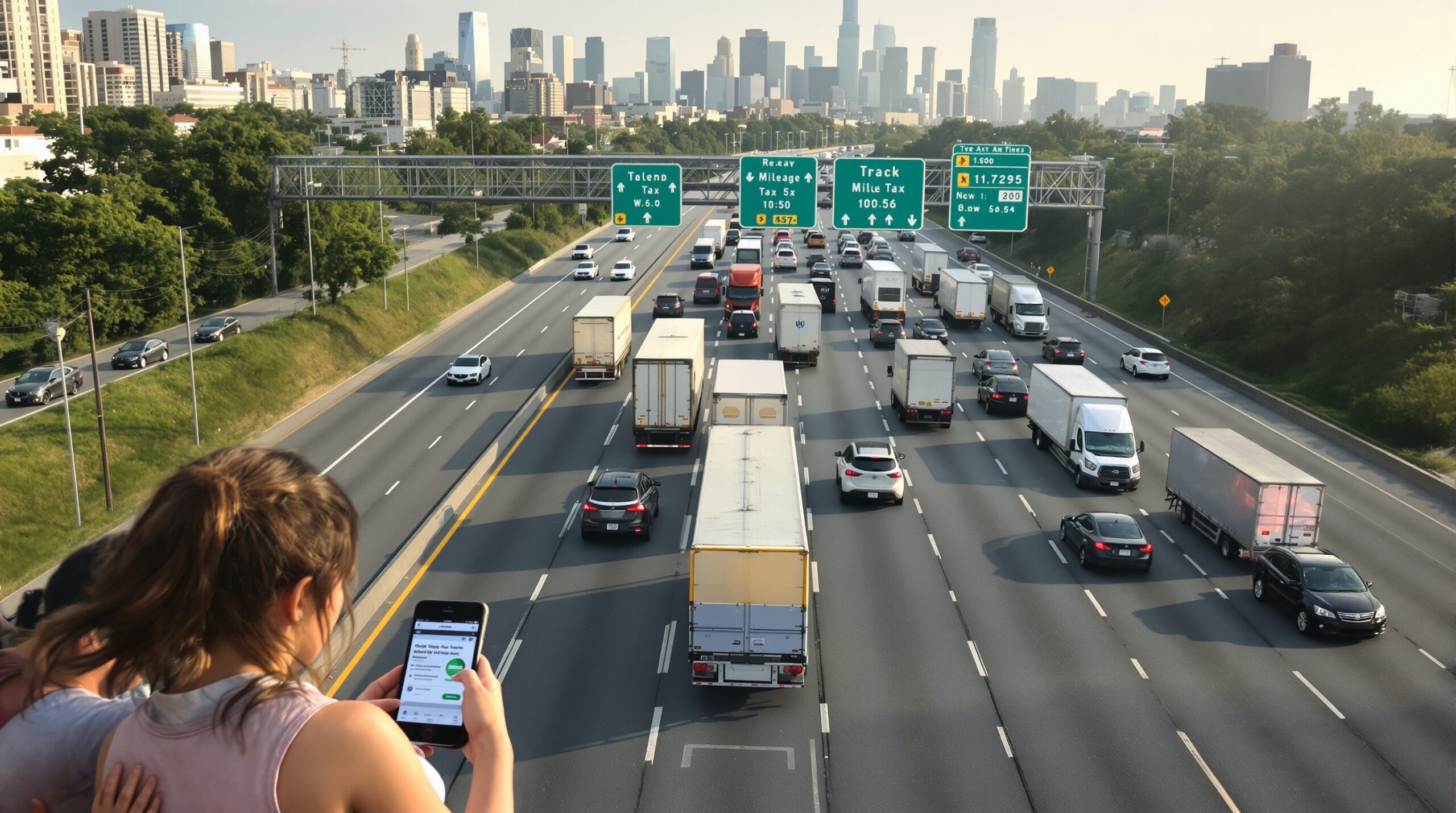America’s roads depend heavily on gas taxes for maintenance and expansion funding. As vehicles get more efficient and electric cars become common, gas tax revenues are dropping. This reality poses a significant risk to the sustainability of the highway system and pushes states to search for alternative funding models. One solution gathering momentum is the concept of mileage-based fees, also known as road usage charges (RUC).
Why Gas Tax Revenues Are Declining
The gasoline tax has been the primary method for collecting revenue for road infrastructure for almost a century. States and the federal government impose taxes per gallon, sending proceeds to transportation budgets. However, modern vehicles consume less fuel due to technological advancements and emissions standards. This efficiency means fewer gallons get sold, which equals less money for road maintenance.
Electric vehicles further complicate matters. Owners of EVs contribute little or nothing to the gas tax despite using public roadways. According to the U.S. Department of Energy, the average new vehicle now gets more miles per gallon than ever before. These trends sharply reduce the revenue raised by per-gallon fuel taxes.
Mileage-Based Fees: An Alternative Solution
The concept of mileage-based fees is simple: drivers pay for road use by the mile instead of the gallon. This system, known as a road usage charge (RUC), aligns payment with actual miles driven. States see this as an equitable alternative, ensuring all users—including those with electric and hybrid vehicles—pay for their share of road wear and upkeep.
Legislators and transportation planners favor the mileage-based fees’ fairness. Those who drive more pay more, regardless of vehicle efficiency. It also ensures the growing number of EV users contributes adequately to infrastructure funding. Transitioning to this model, though, raises questions about privacy, technology, and acceptance among drivers.
States Leading Road Usage Charge Experiments
Several states have launched pilot programs to test the feasibility of mileage-based fees. Oregon was first, to develop the OReGO program in 2015. Under OReGO, participating drivers install GPS-enabled devices that track miles traveled. Drivers then pay a per-mile charge and receive credits for any gas tax paid during the pilot.
Since then, California, Washington, Utah, and Colorado have all implemented similar pilot tests. These states are gathering essential data both on driver reactions and administrative challenges. In Utah, for instance, an optional RUC program for electric and hybrid cars operates alongside traditional registration fees. Participants use plug-in devices or smartphone apps to report miles driven, instead of paying the annual flat fee.
The federal government supports these state-led efforts through funding and technical guidance. Officials evaluate how these models could expand nationwide. These pilots serve as test beds, highlighting both potential pitfalls and practical solutions for broader implementation.
Addressing Privacy and Technology Concerns
One challenge associated with mileage-based fees is safeguarding driver privacy. Tracking mileage can require collecting sensitive vehicle movement data, raising legitimate security concerns. State programs have responded by offering non-GPS options, such as odometer readings verified at service stations or through smartphone photos. Such alternatives allow participation without real-time trip tracking.
Furthermore, states are testing secure data handling and anonymization protocols. Transparency about how mileage data gets used and stored is critical to building public trust. Policymakers must navigate the delicate trade-off between accurate mileage reporting and protecting user privacy. Ongoing dialogue with privacy advocates and technical experts shapes these systems before large-scale adoption.
Public Acceptance and Education
The shift from a familiar, invisible gas tax to a per-mile charge requires public education. Many drivers express skepticism, fearing double payment or bureaucratic complexity. Pilot participants generally report that the system is easy to use and fair, especially once credits for gas taxes are explained. State agencies conduct information campaigns to address misconceptions and highlight the system’s benefits.
Ongoing feedback informs improvements. States gather participant comments via surveys and focus groups. Policymakers are using this input to refine the system, making it simpler and more transparent. Clear communication is instrumental in building broad support for eventual statewide or national adoption. These efforts help ease the transition to a new way of funding vital infrastructure.
Equity and Fairness Considerations
Mileage-based fees raise important questions of equity. Rural residents often drive longer distances and worry about higher costs under an RUC system. States are analyzing pilot data to ensure fairness. Possible strategies include variable rates for rural roads, discounts, or caps on maximum annual charges. Careful policy design can address concerns and ensure that all populations benefit from dependable transportation funding.
Advocates argue that mileage-based solutions are more transparent than gas taxes. Every driver pays based on actual road use rather than vehicle fuel efficiency alone. Policymakers are exploring low-income subsidies, seasonal pricing, and trip-type modifiers to address unique user needs.
Next Steps Towards National Adoption
As pilot programs yield valuable lessons, some states are preparing for broader implementation. Pending legislation in several states proposes to transition gradually, starting with electric vehicles or heavy trucks. Transportation officials anticipate a period where gas taxes and road usage charges will coexist. This allows time to refine systems before full-scale rollout. Interstate collaboration is growing, as many drivers cross state lines daily, and consistency is vital for a national program.
The 2021 federal Infrastructure Investment and Jobs Act dedicates funds for additional state pilots and research. Policymakers hope to develop best practices and technical standards for national RUC systems. As the population shifts to cleaner vehicles, states anticipate mileage-based fees will become central to infrastructure funding.
Conclusion: The Road Ahead for Mileage-Based Fees
Declining gas tax revenues threaten the future of America’s roads. States urgently seek alternatives to keep highways safe and reliable. Mileage-based fees, though not without challenges, show real promise as a fair, sustainable funding tool. Pilot programs across the country continue to refine systems and address concerns related to privacy, technology, and equity. Public education and clear policy design are key to acceptance. As states gather further experience, mileage-based fees could eventually form the backbone of next-generation transportation funding.

